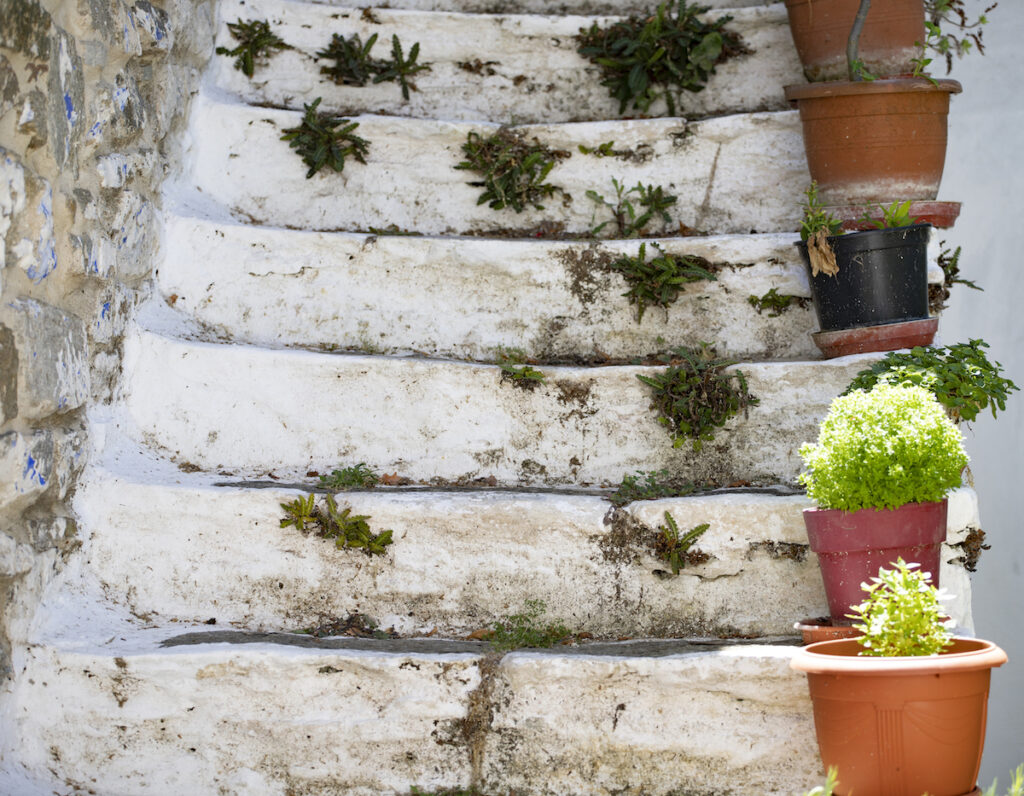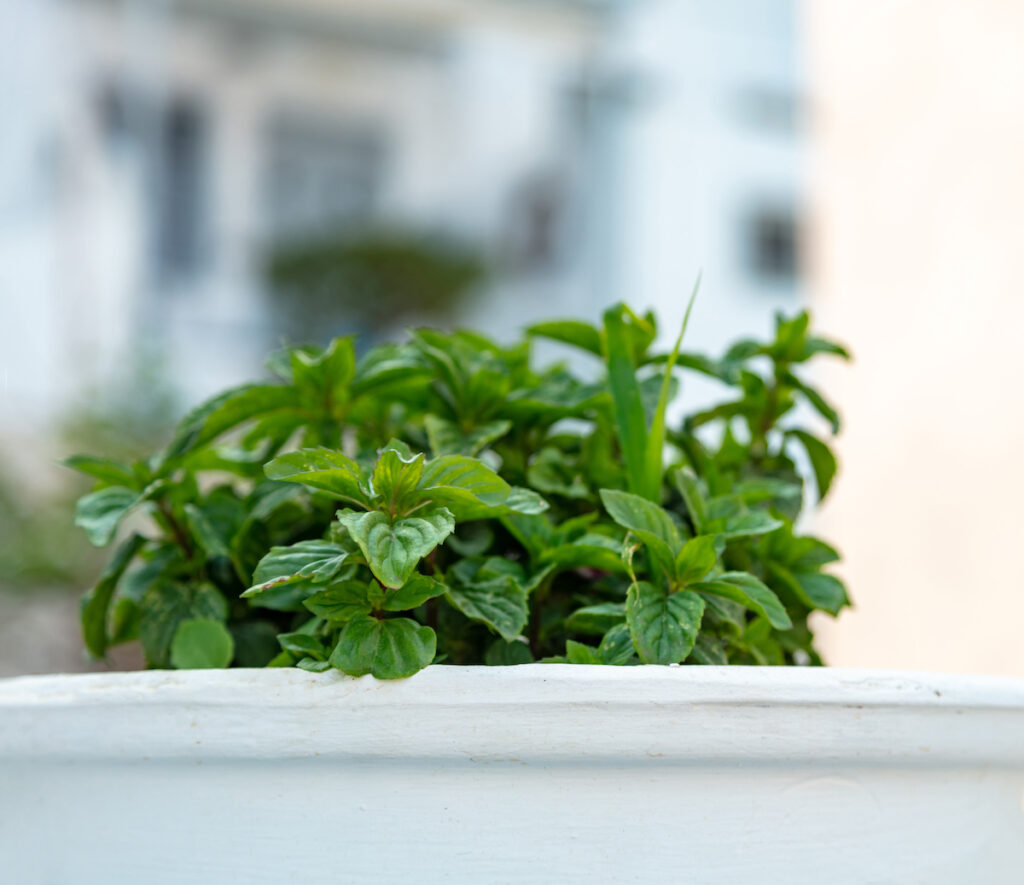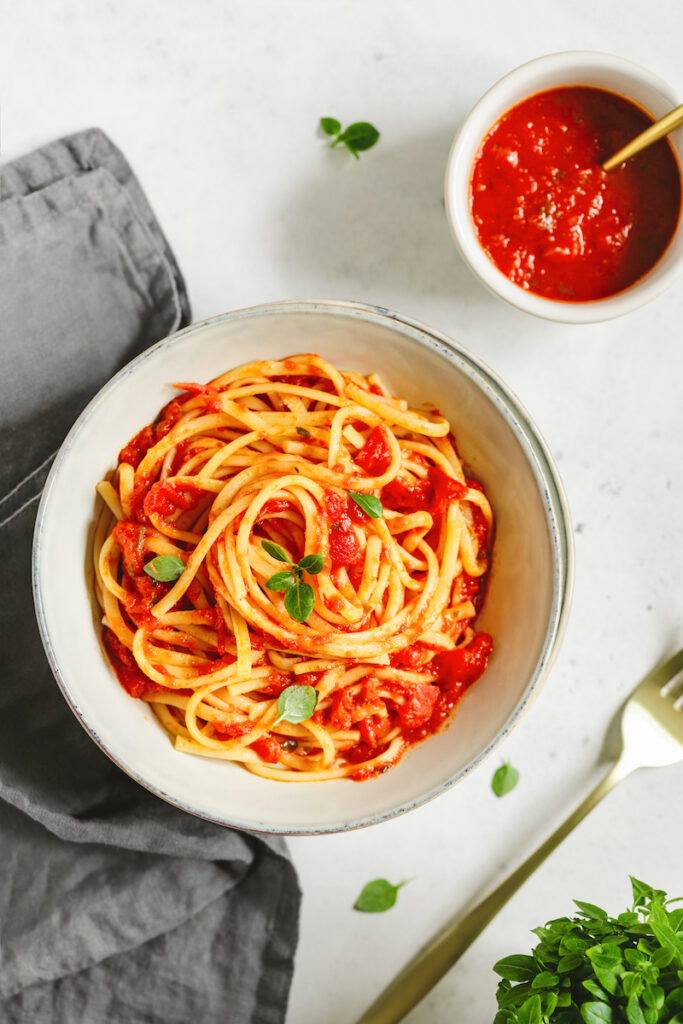As an Amazon Associate I earn from qualifying purchases. This website also participates in other affiliate programs and may earn commissions if you shop through the links used on this website.
(This article was originally published on August 22, 2022 and was last updated on August 22, 2022)
Greek basil is an interesting type of basil – both for growing and cooking with – and can be grown even by those who have no outside space at all. Bijou and compact, but with a strong scent and taste, Greek Basil can be a great choice for small spaces and is a good choice for a container garden.

What is Greek Basil?
Greek basil is the name given to a small-leaved basil type with the Latin name of Ocimum basicilum var. minimum ‘Greek’.
This type of basil is also known as a bush basil, due to its bushy form, smaller leaves and softer stems than other sweet basil varieties. It has a compact and tight growing habit, and the tiny leaves are bright green in hue.
Spikes of small, tubular pink or white flowers appear on the plant in late summer.
Depending on where you live, this type of basil might be grown in the ground or on a bed in the garden in summer. However, since this type of basil grows to only around 30cm tall and wide, it can be an excellent choice for container growing…which is how you’ll often see it growing in Greece!

This type of basil is commonly grown as an annual plant in temperate climes and is often grown indoors as a houseplant year-round, or in containers to place out in summer before bringing indoors before cold weather arrives.
Sowing fresh seeds or propagating the plant through cuttings each year is usually recommended for the best results.
How to Grow Greek Basil
Greek basil is a great choice for container cultivation, especially in small spaces.
It has smaller leaves than other types of sweet basil, but is said to be a little less fussy and perhaps a little easier to grow.
Where to Grow Greek Basil
This basil, like other basils, needs a bright, light, sheltered, and warm location. The soil or growing medium in which it is grown must be free-draining.
If you have a suitably sunny, warm, and sheltered spot in your garden then you might grow this type of basil outdoors in the ground or on a raised bed during the summer months.
Like other basils, it makes a good companion plant for a range of common crops and can be beneficial in bringing beneficial wildlife to your space, and in helping with organic pest control. Its summer blooms and compact habit can also mean that it fits in well to ornamental beds or borders, as well as suiting a spot in a dedicated herb garden.
However, as mentioned above, this basil is particularly well-suited to container cultivation. It can be grown in pots to be placed outside in summer or to remain in a bright, light spot indoors or under cover year-round.

Sowing Greek Basil
Like other sweet basil cultivars, Greek basil should be sown indoors or under glass around 6-4 weeks before the last frost date in your area. And germination rates will be best if you sow seeds within a heated propagator with gentle heat.

Sow the seeds on the surface of good quality, peat-free, seed-starting compost, with added horticultural sand or grit for drainage. Then cover the seeds lightly with a thin layer of the medium.
Germination rates tend to be pretty high with this type of basil, so sow only a few more seeds than you think you require.
Once the seeds have germinated, remove them from the propagator and place the seedlings on a sunny windowsill, watering to keep the medium moist but taking care not to cause waterlogging.
Once the seedlings have developed a few true leaves, transplant each seedling into its own individual little pot, filled with peat-free multipurpose compost.
Planting Greek Basil
If you don’t have the time or inclination to grow this type of basil from seed, small potted plants can also be purchased.
Whether you grow your own from seed (the more affordable and eco-friendly choice) or purchase a pot-grown plant, Greek basil can be placed out into the garden once the weather has warmed reliably where you live. Or kept indoors.
Just remember that if you plan on placing your Greek basil outdoors, you will need to harden off plants sown indoors before you do so. This basically means slowly acclimatizing the tender young plants to outdoor growing conditions.
Caring For Greek Basil
Caring for this type of basil is similar to caring for other sweet basil types.
Water to keep the soil or growing medium moist but not waterlogged. Make sure that excess water can drain away freely. Try to water in the morning where possible, and aim to avoid wetting the leaves where possible, watering at the base of the plant.
When growing in containers, consider feeding every couple of weeks through spring and early summer with a nitrogen-rich organic liquid plant feed if the growth seems poor.
Generally speaking, however, this small-leaved type will be content in a reasonably fertile growing medium without additional organic feeding.
Pot up container-grown Greek basil plants when roots appear through holes at the base of a pot, choosing a new container just a little larger than the old one.
When flowers form, pinching these out will prolong the optimal harvesting period, and ensure that you continue to get plenty of leaves for culinary use.
However, remember that the flowers can be attractive, and beneficial to bees and other wildlife. So if growing this basil outdoors, it can be beneficial to let at least some of your plants flower.
Allowing some Greek basil to flower also opens up the possibility of saving your own seeds to sow next year or use in other ways.
Harvesting Greek Basil
Harvesting Greek basil is also part of its care, since as you harvest leaves from the top of the plant, new leaves will be produced through the summer, and the bushy habit of the plant should be retained. The more you harvest and prune, the healthier and more abundant your plant will be.
The flowers are also edible and can be used as a garnish. And the seeds can also be eaten or added to bread dough to add some flavor.
Both the leaves and seeds also have some medicinal use in herbal remedies, though this type of basil is said to have a milder action than typical sweet basil types.
How to Use Greek Basil
Greek basil is best used fresh, but can also be frozen or preserved in other ways for later use.
Of all the different types of basil, this is one of the types best suited to drying for later use, for example. It holds up better to drying than other sweet basil types.
To dry Greek basil, harvest in bunches, hanging upside down in a cool spot until the leaves are dry, and then store in airtight containers.
Greek basil has a scent reminiscent of cloves and is highly aromatic. Though small, the leaves pack a punch in terms of their taste. You can add the odd leaf to salads, use them to make pesto or sauces, and they work very well in tomato-based dishes or with fresh tomatoes.

Where to Buy Greek Basil
Greek basil seeds and plants are widely available and easy to get hold of for North American growers.
Here are some sources for Greek basil seeds in the US:
- https://www.johnnyseeds.com/herbs/basil/fine-leaf-basil/
- https://strictlymedicinalseeds.com/product/basil-greek-ocimum-minimum-seeds-organic/
- https://www.ecobeeseeds.com/products/organic-greek-basil-seeds
Final Thoughts on Growing Greek Basil (& Cooking with it!)
If you have a suitable space to grow this type of basil, even if it is just a small space on a sunny windowsill in your home, you should certainly consider giving it a go.
Elizabeth is a garden designer, consultancy and writer passionate about growing herbs and other edibles in a sustainable way. She works on her own 1/3 acre garden, growing basil alongside her tomatoes in her polytunnel, and indoors alongside a range of other herbs and crops. She loves inspiring others to get growing and enjoying a home grown diet, wherever they live in the world.

